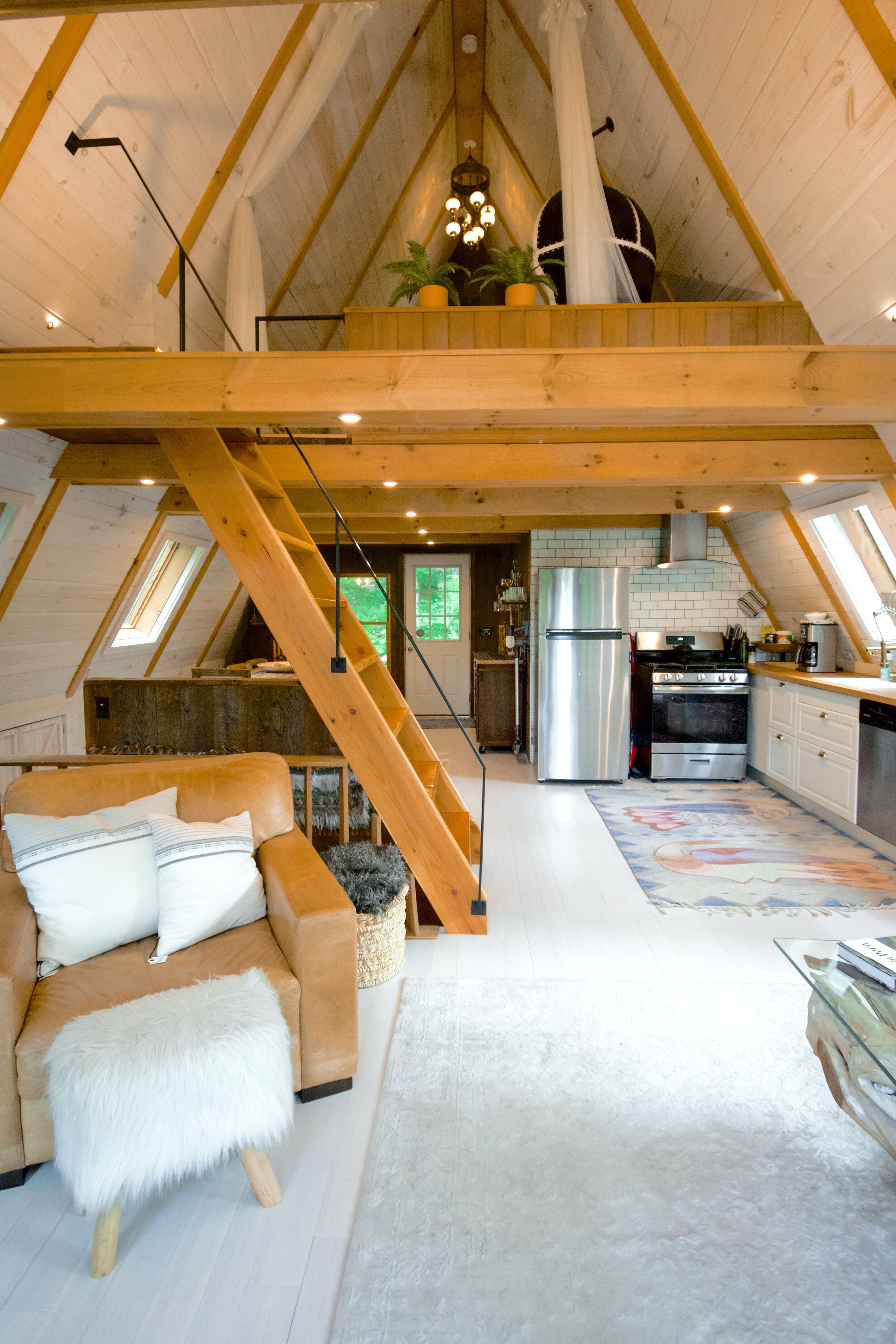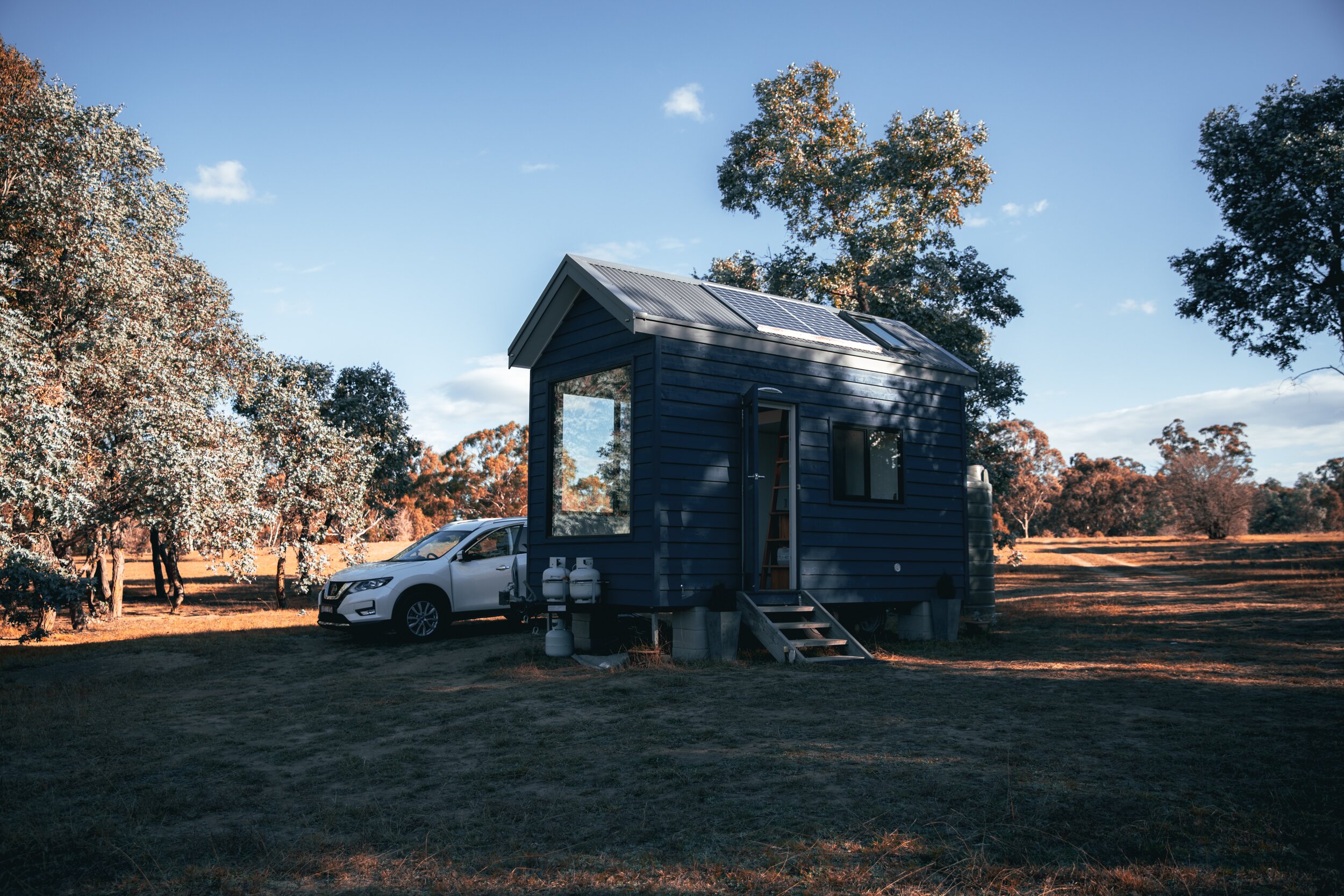How to Buy a Tiny House
If you’re thinking about downsizing in a big way, here’s how to buy a tiny house and simplify your life.
You’ve probably read news stories about tiny homes – the minuscule, 150-square-feet houses (a few hundred square feet at most) that promise a simple lifestyle and affordable living. If the promise of drastically reduced utility bills and the forced simplicity (no room for clutter) appeal to you, here’s how to purchase a tiny house or build your own.
How to Buy a Tiny House
You have a few options for buying a tiny home. You can find one that is already built on land, you can purchase land and then buy or build a tiny home to put on it, or you can buy a tiny home that is mobile and camp with it temporarily. You can browse tiny house listings on Redfin.com; simply search for homes in a specific area, and then use the filter options to set “500” as the maximum square footage. To filter out condos and townhomes in your search results, make sure that you unselect all of the boxes under Property Type except for “Homes.” If a tiny home is listed on the multiple listing service or on for-sale-by-owner sites, it will show up in your search results on Redfin. Keep in mind that you’ll find more tiny homes for sale in rural areas than within a city, like Seattle. So if you don’t see any in your results, try broadening your search area.
How to Buy Land for a Tiny House
The other alternative is to buy an empty lot of land and then put a tiny house on it. To search for land for sale on Redfin.com, uncheck all of the boxes under Property Type except for “land.” If you’re planning to live in your tiny house full-time, you’ll want to look for land with water and septic systems already in place; most listings will mention this in the property description. If you’re planning to live off the land, with a vast garden for growing fresh vegetables and ample room to explore the wilderness, consider purchasing a few acres or more. Be aware that you’ll need permits to construct a home on vacant land, particularly if the land has never had a residential property. In some cases, you may not be eligible to build a tiny home on vacant land and may need to build the tiny house as an accessory dwelling unit. An accessory dwelling unit, or ADU, is a secondary residential unit built on a property that already houses a single-family home. Your options vary by state and city, so it is important to do thorough research prior to buying land. Once you’ve purchased property, you can build or buy a tiny house. There are several builders who specialize in tiny homes and can build one with just the basics or with move-in ready furnishings. Most tiny homes are built on trailers, so you can pick one up with a truck and haul it anywhere, but some are set on foundations like a traditional home. Prices range from $8,000 to $150,000, depending on the quality of materials and custom finishes.
How to Build a Tiny House
If you’re looking through tiny house listings and decide you don’t want to buy a tiny house, you can build one. You can do this on your own or with the help of a contractor who specializes in these types of structures. Building a micro home is a multi-step process that entails a lot of planning. You’ll need to:
Select a suitable site and finalize the purchase of your land.
Draw up a rough floor plan with must-have features.
Decide if you need sewer and septic hookups, or if you’ll bring water in and out on your own.
Decide if you need electricity, or if solar power is an option.
Purchase or draft your final plan.
Consult with builders and establish your budget.
Acquire proper permissions (right-of-ways, etc.) and the appropriate permits.
If you use salvaged materials and build the home yourself, you could spend as little as $8,000. But it takes a lot of time and know-how, especially if your home has electricity and plumbing.
Where to Park a Tiny House
If you have decided on buying a tiny house on wheels, then you’ll need to understand where you are allowed to park your home. Depending on your location, there may be tiny home communities where you can rent or purchase a space to park your home. If your tiny home is legally considered an RV then you can park it in an area zoned for RVs.
How to Finance a Tiny House
While researching how to buy a tiny house, you may wonder what loan options are available. As tiny homes are not large enough to be considered a single-family home, they typically do not qualify for a traditional mortgage. However, there are other financing options to look into before you buy a tiny house.
RV loan: If you plan on buying a tiny house on wheels, you may qualify for an RV loan. These loans tend to be lower in interest, but your tiny home will have to be verified as an RV in order to secure financing. Similarly, you may also qualify to take out a travel trailer loan from your credit union.
Personal loan: Tiny homes are often considered personal property so you might consider taking out a personal loan to buy a tiny house. It is important to consider that personal loans are often unsecured compared to a traditional secured mortgage, so you won’t have to put up collateral in case you default on a payment. However, you’ll likely have a higher interest rate with a personal loan.
Peer-to-peer lending: Since you’re joining a community of tiny-home owners that likely share similar values, there are often people out there willing to loan money to those planning on buying a tiny house. There are many sites that can connect you to investors willing to loan you money to buy a tiny home. Generally, the terms of these loans are determined by the investor along with your credit score.
How to Live in a Tiny House
Living in a tiny house means living a minimalist lifestyle. If you love experiences and spend a great deal of time outside of your home or traveling, you don’t need much square footage to live in other than the basics. That’s the premise behind the tiny house movement.
If you’re downsizing from a larger home, you’ll need to rid yourself of much of your belongings. A large dining room table that seats 12 is not likely to fit in your micro home. Consider giving these items away, donating them to charity, or hold a moving sale.
You’ll need a strong commitment to organization in order to make a tiny-house living work for you. With minimal space, even a few out-of-place items can make your home feel cluttered and disorganized. If you’re moving to a tiny home, this might be precisely the lifestyle you’re looking for.
Originally Published on Redfin.


